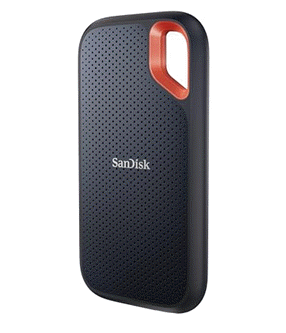2025-05-14 07:27:00
newatlas.com
Studies have shown that many people don’t commute by bike due mainly to a fear of being hit by cars. A new bike-mounted proximity sensor has been designed to help such folks, by objectively telling them which streets are the safest for cyclists.
When you look up cycling routes on platforms such as Google Maps, the safety of those routes is based mainly on the number of bicycle-automobile collisions that have been reported on them.
Unfortunately, this means that a significant number of such accidents have to occur before a route is deemed unsafe. It also doesn’t take into account the smaller “fender-bender” collisions that don’t get reported.
Mapping platforms additionally base their recommendations on the perceived safety of different streets, as self-reported by cyclists. This is a rather subjective approach. After all, it’s certainly possible that motorists may actually tend to give cyclists plenty of space on busy roads that are perceived as being dangerous, while passing dangerously close on quieter “safe” streets.
That’s where the new ProxiCycle sensor comes in. It’s being developed at the University of Washington, by a team led by computer science and engineering doctoral student Joseph Breda.

Breda et al./CHI ‘25
The prototype device simply replaces the bike’s existing left-side handlebar plug, where it uses two infrared-light-based time-of-flight sensors to monitor the spaces directly beside and immediately behind the bicycle. Whenever an object is detected, the ProxiCycle utilizes a Bluetooth module to transmit the sensor data to an app on the cyclist’s smartphone.
That app uses a special algorithm to determine if the detected object was an automobile, and if it passed less than 1 m (3.3 ft) from the bike. If the reading meets both of those criteria, it is saved as an example of a motorized vehicle that passed the cyclist too closely.
The idea is that over a relatively short period of time, readings gathered from multiple ProxiCycle users could be used to paint a realistic picture of just how dangerous various streets actually are.

Breda et al./CHI ‘25
In an initial test of the technology, seven cyclists rode through Seattle with both the device and a GoPro camera mounted on their bike. Close-passing incidents recorded by the ProxiCycle were found to match up with those captured by the camera.
Next, 15 Seattle cyclists used the device while going on a combined total of 240 bike rides over a two-month period. They recorded 2,050 close passes in that time, with the majority of the incidents taking place in locations where higher-than-average numbers of bike-car collisions had already been reported.
The incidents also mostly occurred in areas that cyclists had previously perceived as being dangerous. Importantly, however, the sensor data proved to be a more accurate indicator of just how hazardous those places actually were.
Breda and colleagues now plan on conducting larger-scale studies, which will include testing the ProxiCycle in other cities.
“Experienced cyclists have this mental map of which streets are safe and which are unsafe, and I wanted to find a simple way to pass that knowledge down to novice cyclists,” he says. “Cycling is really good for your health and for the environment. Getting more people biking more often is how we reap those rewards and increase safety in numbers for cyclists on the roads.”
A paper on the research was recently presented at the ACM CHI Conference on Human Factors in Computing Systems in Yokohama, Japan.
Handlebar device helps map Seattle bicyclists’ risky routes
Source: University of Washington
Keep your files stored safely and securely with the SanDisk 2TB Extreme Portable SSD. With over 69,505 ratings and an impressive 4.6 out of 5 stars, this product has been purchased over 8K+ times in the past month. At only $129.99, this Amazon’s Choice product is a must-have for secure file storage.
Help keep private content private with the included password protection featuring 256-bit AES hardware encryption. Order now for just $129.99 on Amazon!
Help Power Techcratic’s Future – Scan To Support
If Techcratic’s content and insights have helped you, consider giving back by supporting the platform with crypto. Every contribution makes a difference, whether it’s for high-quality content, server maintenance, or future updates. Techcratic is constantly evolving, and your support helps drive that progress.
As a solo operator who wears all the hats, creating content, managing the tech, and running the site, your support allows me to stay focused on delivering valuable resources. Your support keeps everything running smoothly and enables me to continue creating the content you love. I’m deeply grateful for your support, it truly means the world to me! Thank you!
|
BITCOIN
bc1qlszw7elx2qahjwvaryh0tkgg8y68enw30gpvge Scan the QR code with your crypto wallet app |
|
DOGECOIN
D64GwvvYQxFXYyan3oQCrmWfidf6T3JpBA Scan the QR code with your crypto wallet app |
|
ETHEREUM
0xe9BC980DF3d985730dA827996B43E4A62CCBAA7a Scan the QR code with your crypto wallet app |
Please read the Privacy and Security Disclaimer on how Techcratic handles your support.
Disclaimer: As an Amazon Associate, Techcratic may earn from qualifying purchases.









































































































